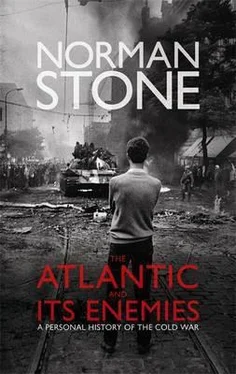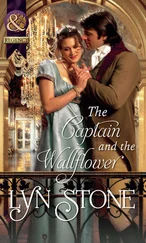But was Chile ‘Third World’ at all? She was very varied in character, with 9 million people over 3,000 miles of coastline, stretching from the sub-tropical copper-producing north to the near Antarctic south: great estates here, small peasant plots there, with modern cities and Indian tribes, a considerable problem of population growth, and, on the outskirts of the towns, callampos , shanty towns (literally, ‘mushrooms’). Half of the population lived in the central valley, and large estates accounted for 80 per cent of all land, up to the 1960s; there was a native Araucanian Indian population, though in scale it did not compare with those elsewhere in Latin America (the Chileans having exterminated many). Chile had in some degree faced the same demographic problem as Latin America as a whole, where the population went up from 211 million to 261 million between 1961 and 1968, and by 1984 had reached 408 million. In Chile it grew at almost 2.5 per cent every year, a figure matched today by Uganda, which has the fastest-growing population in the world, and the cities began in places to be choked. The same was true of Turkey in the same period, adding the population of Denmark (4 million) every year to herself. As with Marx’s Paris, shanty towns, ‘dangerous classes’, woeful sewage, epidemics were a constant reminder that revolution was at the gates.
Chile, with her weird geography and often unpleasant climate, had remained much poorer than Argentina: her people migrated there, and it was usual for them to be in such jobs as house-portering. But with a population derived from the Basque country and Galicia, she also had reasonably civilized politics. There was a moment of military takeover at a particularly bad time in the thirties, but even then it was much less nasty than elsewhere, and the military regime did not last long. There was a strong enough parliamentary tradition, but the divisions of the country were reflected in a multiplicity of parties, proportional representation doing nothing to correct this. As in so many other countries, there were unstable coalitions; the centre usually dominated affairs, and was Catholic or Christian Democrat. Marx simply did not understand religion, thought it absurd, and dismissed ‘Christian Socialism’ as ‘the holy water with which the priest assuages the heart-burnings of the aristocracy’. But there was more to it. Many Christian Democrats had no objection whatsoever to land reform, for the benefit of Catholic peasants; they did not like banks. Their spending on welfare was considerable, and associated with an inflation that already reached 30 per cent in the later 1960s. Dating back to the worldwide slump of the early 1930s, the State was widely involved in the economy — half of industry was controlled by it, through an agency called CORFO — and although the right-wing coalition (‘National Party’) might have tried to dismantle the institutions concerned, and to co-operate with the Americans in the liberalization of trade and investment, the Catholics and of course the Left had different notions. There were elections in 1970, and the left-wing coalition won more votes than either of the others, though not much more than one third. Salvador Allende, its leader, was duly and constitutionally elected president, with the votes of the centre. The essential point about Catholic democracy was made in an Italian context by Indro Montanelli, veteran journalist: Liberals and Catholics said different things in the same language, Marxists and Catholics the same thing in a different language.
Allende then set about reforms and was given further support when he took office. In the first place, the Americans behaved unintelligently. Washington took alarm: another Cuba? Kissinger said at a briefing, ‘I have yet to meet somebody who firmly believes that if Allende wins, there is likely to be another free election in Chile… massive problems for us, and for the democratic forces and pro-US forces in… the whole Western Hemisphere.’ Richard Helms of the CIA wanted to stop Allende, using the small armed Right, and there was an alarmist lunch with the head of Pepsi-Cola and the editor of a right-wing newspaper. Two excitable Chilean generals were roped in, and a constitutional-minded commander was murdered. This, naturally, backfired, creating a great anti-American constituency, and thereafter the Americans behaved more circumspectly. It was then Allende’s turn to make mistake after mistake, and his position was not very strong. He had almost no parliamentary majority, three of the parties in his ‘Popular Union’ coalition were small and likely to defect, and there was also a Constitutional Court able to block legislation where necessary. Then there was the army.
For a Marxist, here was an interesting challenge, both Czechoslovakia and Italy offering obvious points of similarity: a large Communist element (though Allende did not call himself ‘Communist’) in a position of some dominance. Why did Czechoslovakia get 1948, and Chile 1973? There was also Cuba, standing up to the USA and promising revolution throughout Latin America. As things turned out, Allende was a weak man, leaning this way and that way, but he started off quite well. In the first instance, Allende could advance a programme that would bring in allies from the Catholic centre, especially land reform and anti-Americanism. His coalition had two fifths of the parliamentary votes, and he took over 1.5 million hectares while nationalizing the copper industry, which accounted for four fifths of exports. He offered in the first instance money for various worthy causes — free housing, health, etc. — such that in municipal elections, in April 1971, he took nearly half of the vote. It also mattered that even then there was 25 per cent abstention — and apathy was in its way a revolutionary characteristic. His minister of the economy, Pedro Vuskovic, announced that ‘state control is designed to destroy the economic base of imperialism and the ruling class by putting an end to the private ownership of the means of production’, and three of the largest copper mines, American-owned, were taken over, without indemnification. Allende’s first year went well, buoyed by spending of reserves and by high copper prices. He himself later on said that his greatest mistake had been not to hold a referendum on constitutional reform at that time. He was soon to run into trouble.
His Communist supporters were, at the time, quite moderate: for Moscow, relations with the USA were very important, and that might easily mean just abandoning Allende; in any case, Lenin himself had had sharp words to say about left-wing ‘infantilism’. The Communists had some 15 per cent of the vote but they also controlled the trade unions, and they appealed to Radomiro Tomić’s Christian Democratic Left for a common reformist platform. But there was also a romantic Left in Latin America, the MIR, or Movement for the Revolutionary Left, and it was not very interested in such reformism. Quite the contrary, it provoked. It set up the Che Guevara Población around ‘bourgeois’ Santiago, and installed 1,200 families in occupation. The great symbolic figure, Castro, came for a three-week visit at the end of 1971, during which he made inflammatory speeches: ‘we have already learned more than enough about… bourgeois, capitalist liberties’, etc. Allende himself shook his head with disapproval at the antics of the MIR, which denounced his ‘reformism’ as an ‘illusion’, and wished to take power at once, by arming the inhabitants of the shanty towns. Land expropriation took, in all, 9 million hectares of land, and in some cases the land had already been occupied by peasants; and this even affected farms with no more than eighty hectares. In 1972 the university boiled over, as thousands of students went off to the countryside for ‘consciousnessraising’ exercises; by now, thousands of foreigners were flocking in to participate in a socialist revolution, and the secretary-general of Allende’s own socialist party, the upper-class Carlos Altamira, announced that the battle with ‘the bourgeoisie and imperialism’ though postponed was on the cards. Nationalizations went ahead, and the United Nations Economic Council for Latin America contained Marxist economists who gave Allende their sanction. The parliament gybed at this, and some of the nationalization was pushed through by a device close to fraud. A law already in existence allowed firms to be sequestrated if they were badly managed, and it was easy enough for Allende to push up wages, drive a firm into bankruptcy, and then sequestrate it; strikes might have the same effect. The State had run forty-three enterprises in 1970 but, by 1973, had 370 on its books, as administrative chicanery was used to demonstrate that they had been incompetently run in private hands. At any rate, Allende was bypassing Congress, by executive action, and this naturally threatened American investments, which, in copper and with the multinational ITT, were considerable. Nixon, late in 1970, had resolved to give no credit to Chile, while also using the US influence to prevent others from giving it.
Читать дальше












![Edward Ellis - Adrift on the Pacific - A Boys [sic] Story of the Sea and its Perils](/books/753342/edward-ellis-adrift-on-the-pacific-a-boys-sic-s-thumb.webp)